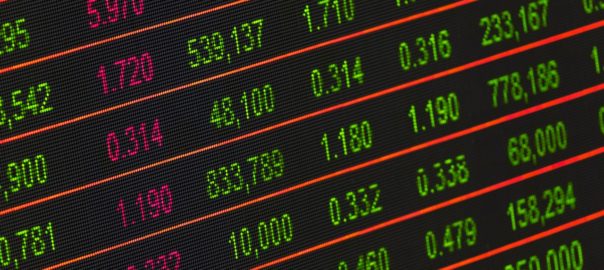The short answer
Yes!
What are options?
First off, this post is not the right place to learn all about options. Options trading is not for everyone as options are riskier than stocks. Nevertheless, here are the basics: A call option is a contract that allows you to buy 100 shares of stock of a company at a particular strike price. For example, Ford Motor Company shares are currently prices at $8.10. A call option for Ford with a strike price of $10 and expiration date of September 18, 2020 can be purchased for a premium of $0.13 (x 100 shares = $13). The break-even price is the sum of the strike price and the premium:$10.13. Since Ford’s current price is below the option’s strike price, the option is said to be out-of–the-money (OTM). If Ford’s stock price goes above the $10 strike price, then the option is said to be in-the-money (ITM).
The option premium can move up and down with the price of the stock, as it goes closer or farther to being ITM. Option premiums are also generally higher for volatile stocks. You can sell the option before the expiration date at a profit or loss. If you hold the option until the expiration date and it is OTM, then the option will simply expire and you lose the premium you paid. If you hold the option until the expiration date and it is ITM, then may execute the option and actually buy 100 shares of ford for $10 each (x100 = $1,000). If, for example, Ford’s price at expiration $11 and you execute the call option and sell the stocks right away, then your total profit is $100-$13 (premium) = $87 or a more than 600% gain. If you used the same $13 to buy 1.60 shares of Ford (at $8.10 each) assuming fractional shares area allowed), then you only gain $4.60 if Ford’s price increased to $11.
This illustrates the leveraged nature of options: for the same amount of money, you can potentially have much higher gains buying options than buying stocks. The counterpoint is you can LOSE the entire premium if the bet does not go your way (e.g. the option expires OTM). On the other hand, if you simply bought Ford stock, then at least you can continue holding those shares until it hits your target.
The second type of option is the put option. This is a contract that allows you to sell 100 shares of stock of a company at a particular strike price. Many of the things I discussed about call options apply except in the “opposite” manner. ITM put option means share price is below the strike price. OTM option means share price is above the strike price. The break-even price is the strike price minus the premium paid. You can buy put options if you are betting that the stock price will go down. You can also use put options to hedge against a downward move in the stocks that you own.
How to get started with options trading
When opening a brokerage account with the likes of Charles Schwab or Interactive Brokers, you are typically only given stock trading privileges by default. During the application process, you would have to explicitly ask for options trading capabilities to be enabled in your account. Since options are generally riskier than stocks and offer a variety of trading strategies with increasing levels of risk, brokers typically want to make sure that you are aware of such risks involved.
When I initially applied for my Charles Schwab account, I indicated that I wanted to have options trading enabled in my account. They then sent me an email asking me to call about my options trading application. I was too lazy to make that call so when my brokerage account was finally approved, options trading was not enabled. At that time, I still had my Robinhood account where I can trade options as well. A few months later, I again lodged my application for options trading with Charles Schwab. In the application, they ask for your options trading knowledge level (None, Limited, Good, Extensive), experience (how many years), number of trades per year, and amount per transaction.
Schwab then again asked me to call them. When I did, they asked me about my income, and what trading strategies I am pursuing. They also asked what amount of my brokerage account I will use to trade options, and how I would react if I lose that entire amount. Schwab has four option approval levels, and I applied for and was approved for Level 1.
How much does it cost to trade options?
While Schwab does not charge any commission to buy and sell stocks, it does charge $0.65 per option contract. This fee applies for both buying and selling. For example, that Ford call option with $0.13 premium describe above, will actually cost $13.65 (100*$0.13 + $0.65) to purchase.
